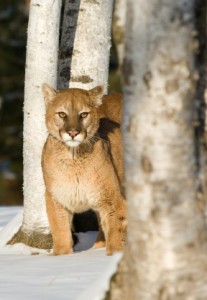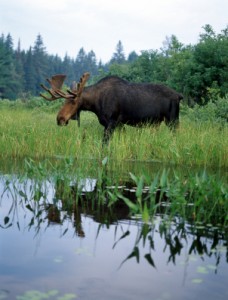- October 6, 2023
Encountering Predators on the Trail
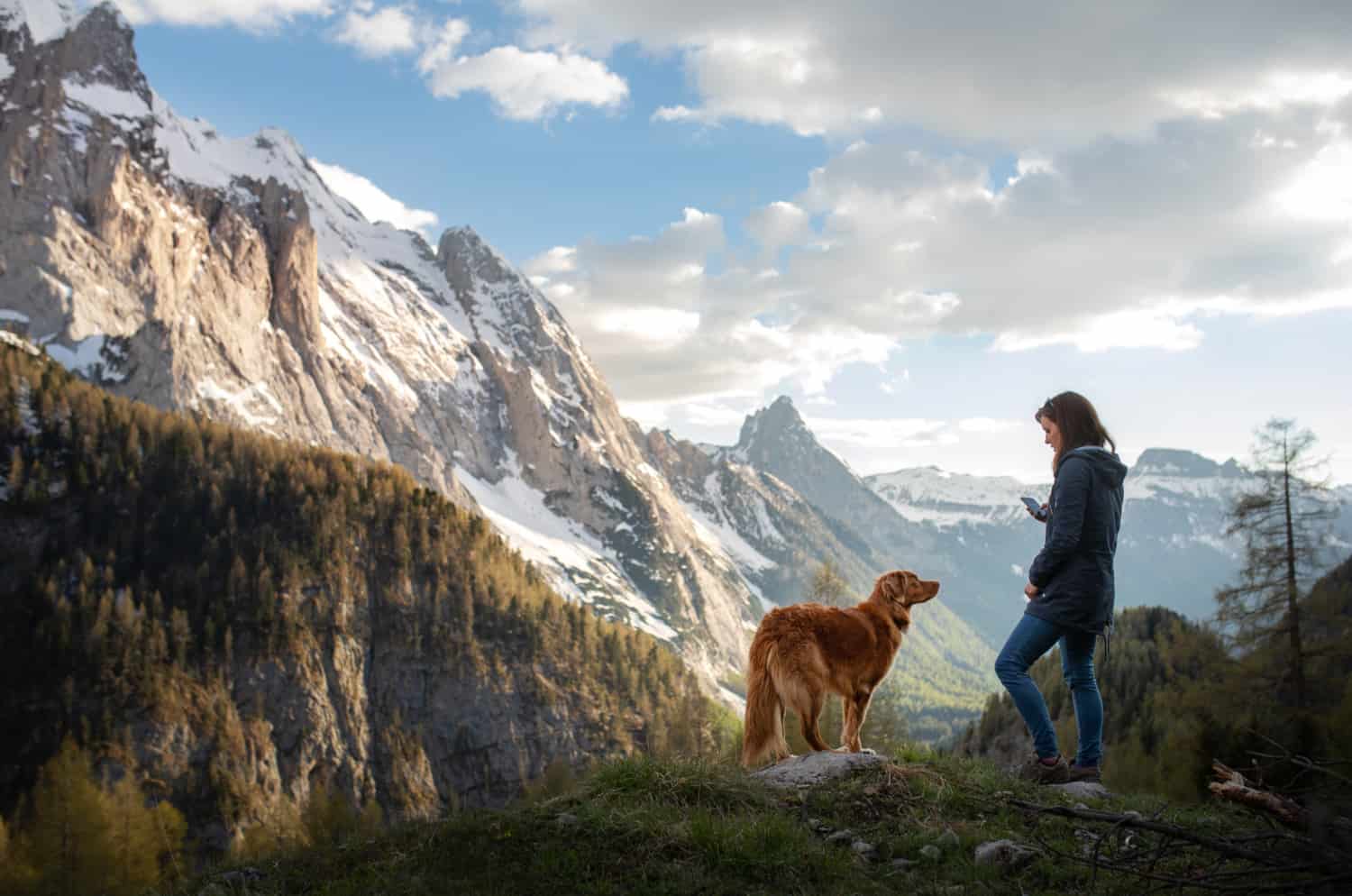
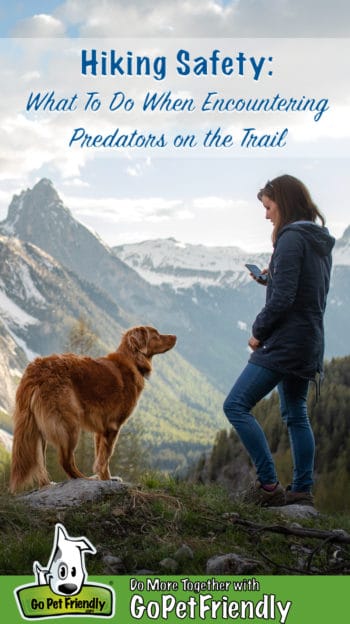
Hiking is an extremely popular pet friendly activity and a great way to explore new places when you travel. And seeing wildlife along the trail is a special treat! But it’s important to know how to handle encountering predators during your hike.
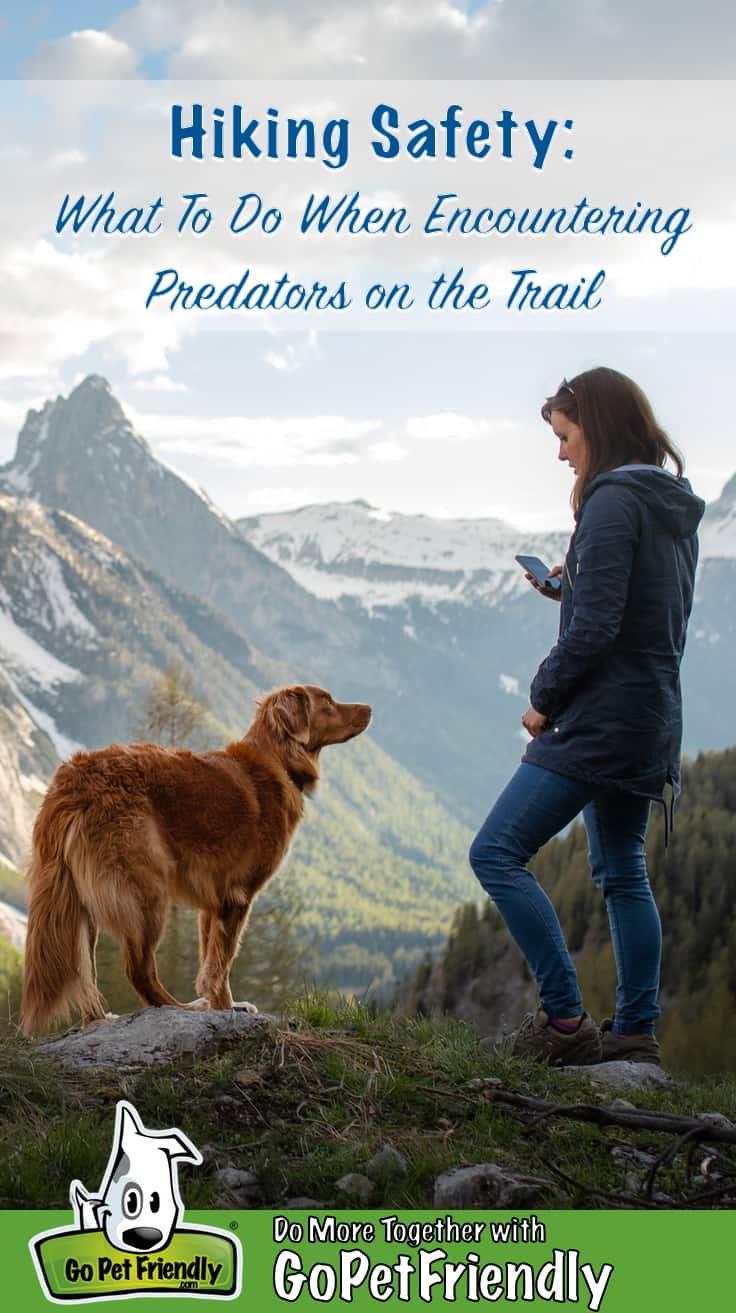
Hiking is one of our favorite pet friendly activities, and I know many of you feel the same way. Of course, communing with nature can lead to encounters with wildlife and, while thrilling, it can also be dangerous.
Deterring an attack, or surviving one, requires different behavior depending on the animal you encounter. Before you head out, make yourself familiar with the wildlife that lives in the area you’ll be hiking, and follow these tips for encountering predators on the trail.
READ MORE ⇒ Best Pet Friendly National Parks in America
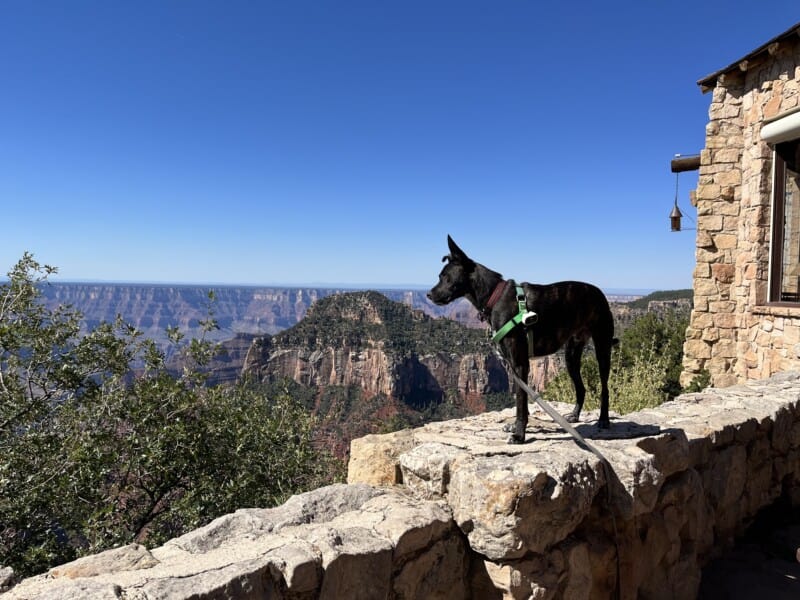
Pet Friendly Hiking Tips
GoPetFriendly may earn commission or revenue on some items through the links below.
When hiking with your pets, keep in mind that many wild animals consider dogs to be a deadly threat. Even if your dog is a teddy bear who wouldn’t hurt a fly, his presence in an animal’s environment can cause them to behave defensively. They also believe they’re encountering predators! So, as you’d do with any activity, it’s important to take precautions to keep yourself and your pet safe.
Here are a few things that could make you and your dog less threatening to any wildlife you might encounter:
— The best strategy is to avoid surprising animals by making noise as you hike and staying aware of your surroundings – especially on sections of trail with limited sight lines.
— Attaching bear bells on your dog’s collar will alert wildlife to your presence and give the animals time to avoid you.
— If you are hiking in bear country, keep in mind that bears tend to be more active at dawn and dusk, so plan your hikes accordingly.
— Don’t wear headphones. Instead, tune into your surroundings so you can hear any animals that might be moving near you.
— Keep an eye out for tracks, fresh scat, digs, other signs that animals are active in the area.
— Don’t jog on the trails where encountering predators is common. Running activates a predator’s instinct to chase and attack.
— Keep your dog on a leash so that he can’t put himself and you in danger by chasing any animals you encounter. If he does react to an animal, do your best to keep him close and under as much control as possible. Calmly move away from the animal, taking care not to run or allow your dog to run, as it might trigger the animal to chase you.
— In places where off-leash hiking is allowed, consider keeping your dog leashed if he doesn’t have a solid recall. And even if he does, keep pets close to you and within sight at all times.
— Be sure someone knows where you’re going and when you plan to be back.
— Carry a first aid kit and a cell phone.
— Carry bear spray and be sure that you have practiced using it before an attack.
READ MORE ⇒ 7 Essentials for Desert Hiking with Dogs
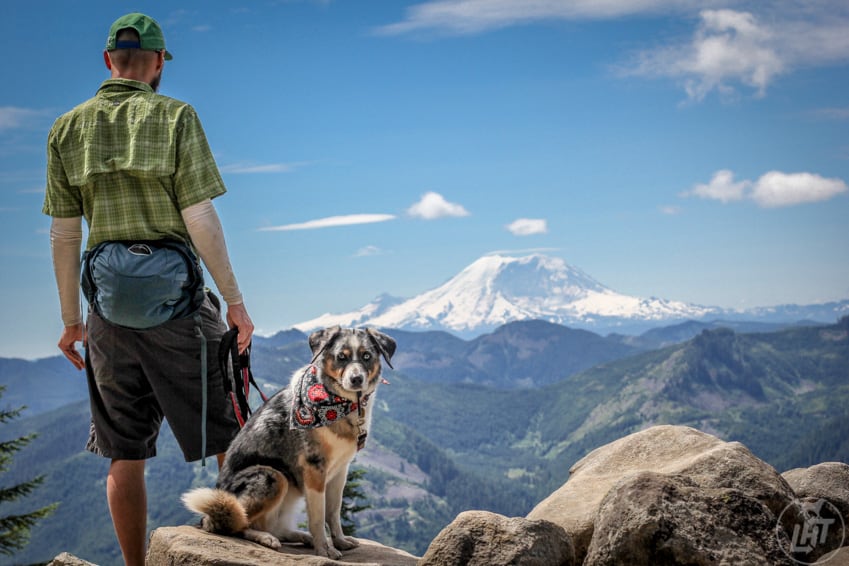
Tips For Encountering Predators On The Trail
If You See A Mountain Lion (Cougar)
— Calmly face the lion and maintain eye contact according to the U.S. Forest Service. The Humane Society of the U.S. recommends staring at a cougar’s feet instead.
— Hold your ground or back away slowly.
— Stand upright – don’t crouch or bend over. Make yourself look large – raise your arms or hold a jacket or backpack above your head.
— Talk loudly and firmly in a deep voice.
— Pick up your dog (if it’s small enough) so he does not run, or keep your larger dog close to you.
— If the lion behaves aggressively, throw stones, sticks, or your belongings in its direction.
If You Are Attacked By A Mountain Lion
— Don’t run.
— Fight back using what ever is available to you – sticks, tools, keys, rocks, or even your bare hands.
— Protect your head and neck, using your backpack or jacket as a shield.
If You Meet A Coyote

— Calmly and slowly back away and maintain eye contact. Don’t turn your back.
— Pick up your dog (if it’s small enough) so he does not run, or keep your larger dog close to you.
— Raise your arms or hold a jacket or backpack over your head to make yourself look bigger.
— Clap your hands and shout in a deep voice.
If You Are Attacked By A Coyote
— Don’t run.
— Yell loudly, and throw rocks, sticks or your belongings at it.
— If it moves closer, throw dirt, gravel, or sand in its eyes.
If You Encounter A Bear

— When you see a bear but the bear doesn’t see you, detour quickly and quietly, but do not run. Give the bear plenty of room, allowing it to continue its activities undisturbed.
— Pick up your dog (if it’s small enough) so he does not run, or keep your larger dog close to you.
— If the bear sees you, remain still, stand your ground, and avoid sudden movements.
— You want the bear to know you’re human, so talk calmly in a normal voice and move your arms.
— The bear might come closer or stand on its hind legs to get a better view. Remember, a standing bear is not always a sign of aggression.
— If the bear is watching you but not moving, slowly move sideways away from the bear. This allows you to keep an eye on the bear and avoid tripping. If the bear follows, stop and hold your ground.
— Throw something onto the ground (like a hat or camera) if the bear moves toward you. This might distract the bear and allow you to escape.
— Never feed or throw food to a bear.
If A Bear Charges You
— Remember that bears charge as a bluff by running toward you then veering off or stopping abruptly. Stand your ground until the bear stops, then slowly back away.
— Never, ever run from a bear. They will chase, and bears can run faster than 30 mph.
— Don’t run towards or climb a tree. Both black bears and grizzlies can climb trees, and many bears will be provoked to chase you if they see you climbing.
If A Brown Or Grizzly Bear Attacks
— Use bear spray if you have it. Spray when the bear is within 40 feet so it runs into the fog. Aim for the bear’s face.
— Play dead! Lie face down on the ground with your hands around the back of your neck.
— Stay silent and try not to move.
— Keep your legs spread apart and if you can, and leave your pack on to protect your back.
— Fighting back usually increases the intensity of the attack. However, if the bear persists, fight back vigorously. Use whatever you have to hit the bear in the face.
— Once the bear backs off, stay quiet and still for as long as you can. Bears will often watch from a distance and come back if they see movement.
If A Black Bear Attacks
— Use bear spray if you have it.
— Black bears are generally less aggressive than their Brown and Grizzly Bear cousins, so fight back! Be aggressive, concentrating your blows on the bear’s face and muzzle.
If You Come Across A Moose
— While it might seem silly to include moose in an article about “encountering predators” they are known to dislike dogs. So if you see one on the trail, pick up your dog or keep him close on leash.
— Talk calmly, and back away giving the moose plenty of space.
— Moose often will not move off the trail, so you might need to detour through the brush to get around.
— Watch for signs the moose might attack, like ears back, hair raised on hump (or “hackles”), grunting, or stomping feet.
— Moose will also charge as a bluff, running toward you then veering off or stopping abruptly. Stand your ground until the moose stops, then slowly back away.
If A Moose Attacks
— Back off and run. Get behind a tree or rock – anything to separate you from the moose.
Curl up with your hands on head and neck using your backpack as a shield.
Stay still until the moose is a good distance away. If you try to get up while it’s close, it could trigger another attack.
Anytime you see an aggressive animal you should report the incident to a ranger, the parks and recreation department of the area, animal control, your local wildlife center, or a similar organization.
Are there any tips for encountering predators on the trail that you’d like to add?
Amazon Affiliate Disclosure: GoPetFriendly.com LLC is a participant in the Amazon Services LLC Associates Program, an affiliate advertising program designed to provide
a means for website owners to earn advertising fees by advertising and linking to amazon.com, audible.com, and any other website that may be affiliated with Amazon
Service LLC Associates Program. As an Amazon Associate, the owner of this site earns a commission from qualifying purchases.
(Visited 39,357 times, 1 visits today)
Tags
What do you think?
Related Articles

New Puppy Checklist: Gear You’ll Need for Your New Dog
Getting a new puppy is really exciting, but before you welcome them home, it’s important to prepare your space for them. Since puppies need a

How Big Do Mini Poodles Get? Vet Reviewed Average Weight & Growth Chart – Dogster
The information is current and up-to-date in accordance with the latest veterinarian research. Learn more » When you buy a Miniature Poodle, you might not

Can Police Dogs Smell Nicotine? Vet Verified Facts & Info – Dogster
The information is current and up-to-date in accordance with the latest veterinarian research. Learn more » While cigarette sales have been declining steadily for decades,

How Old Is 5 in Dog Years? Vet-Approved Guide to Each Size of Dog – Dogster
The information is current and up-to-date in accordance with the latest veterinarian research. Learn more » A common method for calculating a dog’s age is


